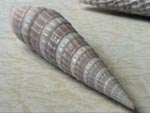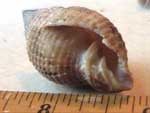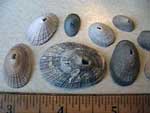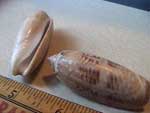




 It's difficult to pinpoint the exact identification of this shell at the moment. Shells that share resemblance, are categorized under Naticas, Moon and Ear Shells. In my shell book there are two species that closely resemble this particular shell. In fact, Morocco Natica, the latter appears to be identical to the shell which I have featured in this entry. I say the species is likely different, due to the common location of the shell. (Florida and West Indies).
It's difficult to pinpoint the exact identification of this shell at the moment. Shells that share resemblance, are categorized under Naticas, Moon and Ear Shells. In my shell book there are two species that closely resemble this particular shell. In fact, Morocco Natica, the latter appears to be identical to the shell which I have featured in this entry. I say the species is likely different, due to the common location of the shell. (Florida and West Indies).#1 Shark's Eye, Polinices duplicatus, which reaches 1-2½", commonly found in Florida and Gulf of Mexico.
#2 Morocco Natica, Natica marochienis, ½-1" commonly found in Florida and West Indies.
Would appreciate comments from anyone who can identify the species of this shell.
Next is the moon snail (Polinices duplicatus), also called a shark eye. It's a carnivore, eating lots of bivalves. You may have seen some of its victims -- bivalve shells with perfectly round holes in them, usually near the hinge. You also may have seen their egg cases which look like sand collars when they wash up on the beach.
Terri K. Hathaway
Marine Education Specialist
North Carolina Sea Grant
http://www.ncseagrant.org/














No comments:
Post a Comment